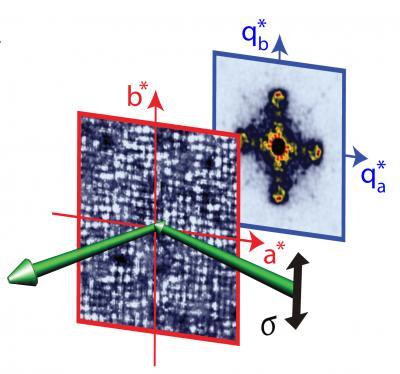This news release is available in German.
Even the so-called high-Tc superconductors still require very low temperatures of minus 200 degrees centigrade. While cooling down to these temperatures involves substantial effort, superconductors are already employed in many areas, e.g., for magnetic resonance tomography in medical applications. Despite extensive research, materials providing lossless conduction of electricity at room temperature are missing up to now.
High-Tc superconductors were discovered in 1986, the Nobel prize for the discovery came only one year later. The phenomenon of superconductivity at high temperatures is found in a class of materials called the cuprates, complex compounds of copper and oxygen, and additional ingredients. They are in the focus of research for almost 30 years now. Many aspects of the high-Tc cuprates, however, are still to be understood. This is due to the subtle details determining the properties of the charge carriers in these materials. Thus, a number of competing mechanisms preclude the superconducting state.

This is the stripe order of charge carriers in Bi2Sr2CaCu2O8+x [2]. The figure shows the structure with a period of approximately one nanometer (front) and the related diffraction pattern (back) obtained by a so-called Fourier transformation.
(Photo Credit: Image: Yazdani Lab, Princeton University)
One of the competing states of the materials is a regular stripe pattern of charge carriers on the nanoscale. This kind of order freezes the charge carriers and prevents superconductivity. Already last year, guest researchers at BESSY II could elucidate the importance of this mechanism and its connection with superconductivity in a representative group of cuprates [1]. Lead by two research groups from Princeton and Vancouver, international teams of scientists have now identified the so-called charge order as a generic property of this class of materials.
For their research, they used the XUV diffractometer developed at HZB, which is operated at the UE46_PGM1 beamline at BESSY II. Employing soft x-ray synchrotron radiation, they succeeded in detecting the elusive phenomenon of charge order and measured the related nanostructures with high precision. This is an important step towards understanding the charge order and its connection to superconductivity in the cuprates. The research was conducted in close cooperation with scientists from the Department Quantum Phenomena in Novel Materials (previously from the Institute of Complex Magnetic Materials) at HZB. The results are now published in two articles in Science [2,3]. "Identifying and understanding the mechanisms competing with superconductivity raise the hope to control and eventually deactivate them. This may be one step towards superconductivity at room temperature", explains Dr. Eugen Weschke, who supervised the experiment at BESSY II.






Comments